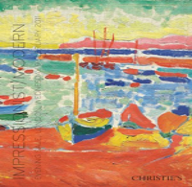Wild beasts on the French coast
MORNING WILL COME
Dawn always breaks no matter how long and dark the night.
The underlying subject of this article is, of course, France. However, only an extreme egotist would believe that a short essay could make even a tiny dent in this immense and complicated subject. But for those who know La Belle France, for those who intend to get to know it, or for those who will remain francophiles from afar, reading about l’Hexagone may provide readers with a moment or two of interesting diversion. A few crumbs of food for thought perhaps. It might even prove helpful when happier times are restored.
Please don’t hesitate to get in touch with the author if you have any queries.
Wild beasts on the French coast
He was pointing in amazement at a Renaissance-like sculpture in the middle of a Paris gallery in 1906. It was full of very colourful paintings, except for one statue. The well-known art critic exclaimed: “Donatello au milieu des fauves!” (Donatello among the wild beasts.)
A handful of painters who had tired of Impressionism were moving on to something new.
Art lovers were stunned.
Colour was the problem.
The pure pigment was the common denominator.
If Paris was the epicentre of world art at the end of the 19th Century, Collioure, on the Cote Vermeille became the centre of this major new movement. Matisse was one of the leading exponents. He claimed that “Nowhere in France is the sky more blue than on this stretch of the Mediterranean coast.” Derain, Vlaminck, Dufy, Braque and Picasso also flirted with the radical ideas of the “Wild Animals.” Put simply, saturated, intense colour and frenetic brushstrokes were the cornerstones of the movement.
Le Chemin du Fauvisme
Le chemin du Fauvisme is an ideal way to get to grips with how some of the Fauves saw certain views and subjects, and how they translated them onto canvas.
The chemin is a popular walk around the port of Collioure, stopping off where some of their best-known works were painted. An adjacent plaque or frame shows the view exactly as it was when the Fauves were there, and you can compare it with today’s view in front of you. It gives a great idea of what the artist was striving for during the creative process of painting.
‘Collioure‘ (Les toits de Collioure) by Matisse dates from 1905 and is a good example of frenetic, broken brushwork and wonderful pure colour.

André Derain’s ‘Mountains at Collioure’ clearly show how close Fauve brushwork was to Van Gogh’s Post Impressionist and groundbreaking technique.
‘Bateaux au port de Collioure, 1905‘ is another work by Matisse showing a view of the port through French doors. Once again, the brushstrokes are so frenetic that the canvas shows through the pigment in many areas of the painting.

An important contributor to the Fauve movement was Maurice Vlaminck.
In ‘Autumn Landscape‘ the warm pigments on his palette dominate the composition. Over half of the painting is composed of fiery red, yellow and orange colour.

‘Le port de Collioure,’ is a quick ballpoint pen sketch by Picasso. And here is the present-day frame that highlights the scene.

Picasso and Braque also spent some time at Cadaques just over the border in Spain.
For the more adventurous, there is a great walk along the Cote Vermeille to Cadaques. The tourist office at Collioure has all the information you’ll need and the route is very well marked. It takes a few days (depending on how fast you walk) and there are plenty of places to stay, including Port-Vendres, Banyuls-sur-Mer, Cerbere and several other pretty little ports along the way. Also, the autoroute (A9) and nationale (D914) both swing inland at this section of the coast taking the holiday crowds with them.
This means the walk is invariably less crowded than one would expect, especially outside the mad months of July and August.
(Note: Getting in and out of Collioure during peak season is all but impossible!)
Cadaques is also impossible in midsummer, but surprisingly tranquil outside of these two months. Dali had a house at nearby Portlligat which is now a museum.
From Cadaques, you can take the bus to Figueres (don’t miss the Dali museum) and the train service has very good connections back to France.
Bon voyage et bon courage sur le chemin.
Which are your favourite artists of this Fauve period? Les Fauves… (les fauves – Wild beasts on the French coast)
1. Collioure Nord via Wikipedia
2. Matisse ‘Les toits’ via Wikipedia
3. Matisse ‘Landscape at Collioure’ via Wikipedia
4. Matisse ‘View of Collioure from Open Window’ via Wikipedia
5. Matisse ‘Batueax au Collioure’ via Christie’s catalogue
6. Matisse ‘portrait of his wife’ via Britannica.com
7. Autumn Landscape via Moma
8. Collioure port via Wikipedia










